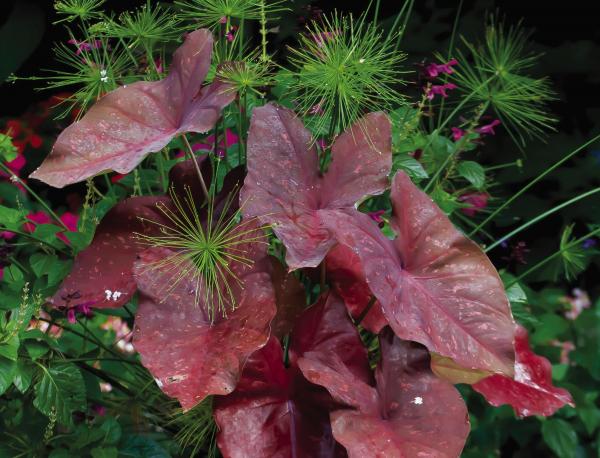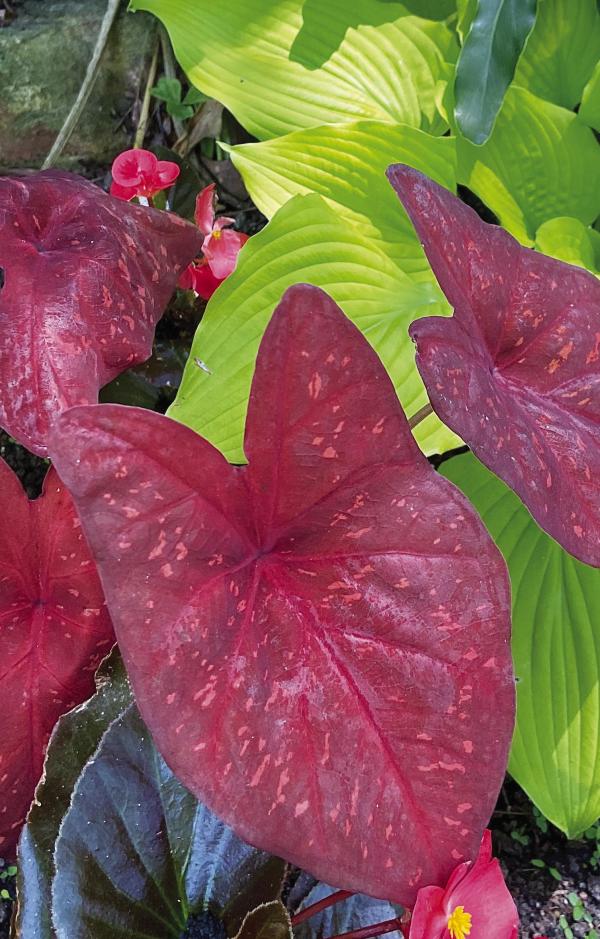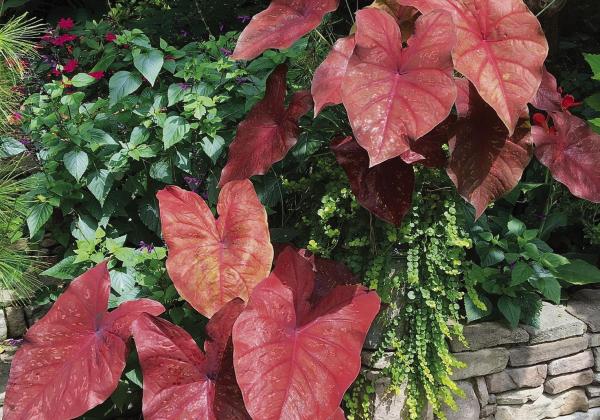GARDENING
Norman Winter
Horticulturalist
Imagine a plant so unusual and beautiful in your landscape you stare hypnotically at it every day, go further and say, a 100-days. That is precisely how I feel about Heart to Heart, Burning Heart caladium, and the reason is this: it simply can’t be that color.
In May, I wrote about Using Heart to Heart caladiums to create the unexpected in the landscape. My son James used Heart to Heart, Burning Heart in a project, and I was shocked that I not only had never heard of this variety, but even more so, that he didn’t share some with Dad.
The old garden guy was able to locate his own, however, and though the summer hot misery index was off the chart, Burning Heart created some ecstatic plant bliss that pulled me through the heat. I shot a picture one night about 8:30 and sent it off to Dr. Allen Owings, retired Professor Emeritus with the LSUAgCenter and now horticulturist at Clegg’s Nursery.
I asked him if he knew about this caladium and was it in Louisiana. He said, “We've had it for a couple of years and it is Shazam, Shazam, Shazam!” So, then I inquired of the company, was this caladium found on an expedition to the rainforest in Borneo? Kind of like Indiana Jones. The first answer is, caladiums are from Central and South America. Next Heart to Heart Burning Heart was developed the oldfashion horticulture science way. Pollen from the male parent was given to the female parent and seeds were planted. Good Lord, how long was this process? Can you imagine one day a horticulturist was looking at the field plot and there were these flaming red leaves coming out of the ground? Surely the Happy Dance commenced.
So now I have given the real story, red leaves with pink or orange flecks or freckles. The glowing color changes throughout the day depending on the sun. In direct sun it is a hot, hot vibrant red but let the light shift to filtered and you will swear it is now a rusty red, that still mesmerizes you. Catalogs and trial sites will tell you it is an upright grower with leaves that will reach 12-inches. This morning, I took the tape out and measured several that were 16-inches long and almost 10-inches wide.
James — ever the envelope pusher — combined his with dazzling chartreuse Shadowland Coast to Coast Hostas and the gray, sword-like leaves of Catch a Wave Mangave. I used mine in containers, and the combinations turned out simply incredible. The first partnership created was with Graceful Grasses Queen Tut papyrus grass. I’ll admit I really didn’t know what I was doing. I love both and essentially said, “Let’s see how well you play together.” Then I used the spiller of the ages, Goldilocks Creeping Jenny. The star-like tufts of the Queen Tut grass, the large burning heart leaves of the caladium and chartreuse leaf chains of creeping Jenny created a textural feast for the eyes.





